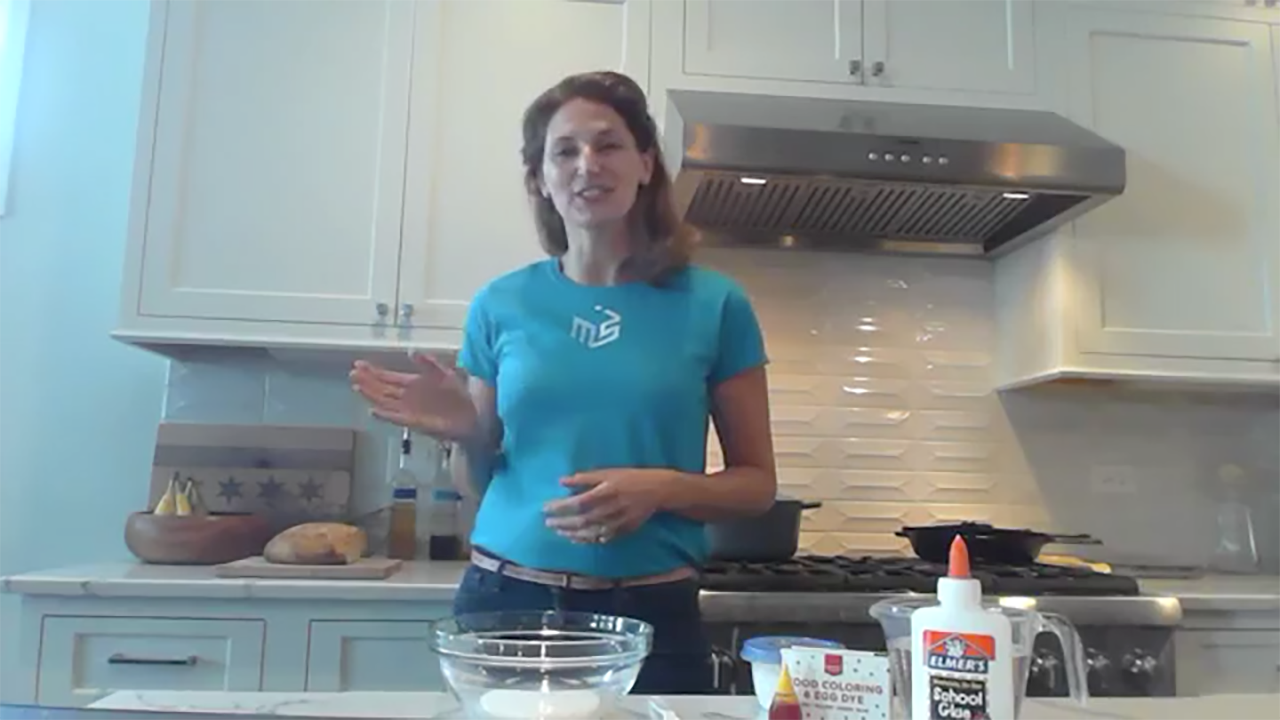Slime
Use polymers found at home to make slime ... the gooier, the better!

Materials
- Borax (available in the laundry detergent aisle)
- Non-toxic white school glue
- Water
- Food coloring (optional)
- Stirrer
- Measuring spoons
- Small container with a lid
- Plastic cup
Safety note: Borax is an irritant and should be kept out reach of children and pets. While safe in diluted solutions, borax can be harmful if ingested.
Directions
- Measure 1 teaspoon of borax and pour it into the small container. Measure 2 tablespoons of water and add to the small container. Close the lid on the small container tightly and shake vigorously for 15 seconds. Set aside when done.
- Pour 3 tablespoons of water and 3 tablespoons of glue into the plastic cup. Stir.
- If you would like colored slime, add a few drops of food coloring to the glue and water mixture and stir.
- While stirring, slowly pour the borax solution into the glue solution. Try to pour the borax solution all around the plastic cup, and leave any undissolved particles of borax in the small container.
- Mix well. You may need to squeeze the slime with your hands to make sure it’s well mixed. You may want to scoop the slime onto a plate so it’s easier to knead.
Remember to keep your slime away from the carpet and furniture. Storing it in a sealed plastic bag will prolong its use.
Alternate recipe
Don't have all the ingredients? Try this recipe instead! Pour a six-ounce bottle of white glue into a bowl. Add 1/2 teaspoon of baking soda and mix. Add 1 tablespoon water (for stretchier slime, add up to 1/2 cup of water). Slowly add in up to 1 1/2 tablespoons of contact lens solution. This solution must contain boric acid for slime to form. You may not need all the lens solution, so mix it in slowly. Knead your slime over and over to make it form!
What's happening?
White glue is loaded with long chain molecules that are called polymers. Borax links those polymers together into a big network; this is called cross-linking. The result is even larger polymers that create a thickened slime. The primary polymer in white school glue is called polyvinyl acetate.
Extension
How does the texture of the slime change when you add less borax? More borax? Less glue? More water?
Vocabulary
Polymer
Tiny molecules strung together in long, repeating chains
Molecule
The smallest part of a substance. It is made up of one or more atoms
Background information
Polymers are tiny molecules strung together in long, repeating chains. They’re everywhere, including our homes, our food, and even in our bodies. DNA, the genetic blueprint that contains all the information that makes you who you are, is a polymer. The proteins and starches in the foods we eat are polymers, and so are the tires on our bikes and cars. Once we understand the variety of polymers that can be made, such as plastics, we can recycle many of them and use them again.